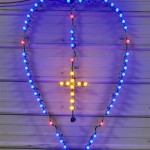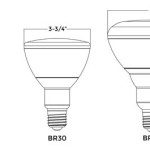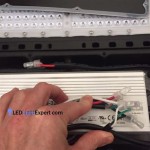Illuminating Your Perimeter: A Guide to Outdoor Solar Lights That Attach to Fences
Outdoor lighting is essential for enhancing property security, aesthetics, and usability. Among the various landscaping lighting solutions available, solar fence lights offer a particularly convenient and cost-effective option. These lights harness the sun's energy, eliminating the need for complex wiring and reducing electricity bills. Their ease of installation, coupled with their environmentally friendly operation, makes them an increasingly popular choice for homeowners.
Solar fence lights are designed to be mounted directly onto fence posts, panels, or rails. This strategic placement provides illumination along property lines, pathways, or garden borders. They not only enhance safety by lighting up potential tripping hazards but also deter intruders by creating a well-lit environment. Furthermore, the soft glow emitted by these lights can add a touch of elegance and sophistication to the outdoor space, improving the overall curb appeal.
The market offers a wide variety of solar fence lights, differing in design, brightness, battery capacity, and features. Understanding the key aspects of these lights is crucial for making an informed purchase that aligns with individual needs and preferences. This article provides a comprehensive guide to outdoor solar lights that attach to fences, covering essential features, installation considerations, maintenance tips, and factors to consider when selecting the right lights for your property.
Understanding the Components and Functionality
Solar fence lights, despite their simple appearance, are composed of several key components that work together to provide illumination. These components include the solar panel, battery, LED light source, and control circuitry. Each component plays a crucial role in the overall performance and longevity of the light.
The solar panel is responsible for converting sunlight into electricity. These panels are typically made of monocrystalline or polycrystalline silicon. Monocrystalline panels are known for their higher efficiency, meaning they can generate more electricity from the same amount of sunlight compared to polycrystalline panels. However, they are often more expensive. Polycrystalline panels, on the other hand, offer a more affordable option with slightly lower efficiency.
The battery stores the electricity generated by the solar panel during the day. Most solar fence lights utilize rechargeable batteries, such as nickel-metal hydride (Ni-MH) or lithium-ion (Li-ion) batteries. The battery capacity, measured in milliampere-hours (mAh), determines how long the light can operate on a single charge. A higher mAh rating indicates a longer runtime, which is especially important for regions with less sunlight.
The LED (Light Emitting Diode) is the light source. LEDs are highly energy-efficient and have a long lifespan compared to traditional incandescent bulbs. They consume significantly less energy, allowing the solar fence light to operate for extended periods on a single charge. LEDs also come in various color temperatures, ranging from warm white to cool white, allowing users to customize the ambiance of their outdoor space.
The control circuitry manages the charging and discharging of the battery, ensuring optimal performance and preventing overcharging or over-discharging, which can damage the battery. It also controls the light's operation, often including features such as automatic on/off based on ambient light levels and various lighting modes, such as steady-on, flashing, or dimming.
Factors to Consider When Choosing Solar Fence Lights
Selecting the right solar fence lights involves considering various factors to ensure they meet your specific needs and preferences. These factors include brightness, battery capacity, weather resistance, design and style, and mounting options.
Brightness, measured in lumens, indicates the amount of light emitted by the LED. The required brightness depends on the intended use of the light. For general ambient lighting and accent lighting, lower lumen options may suffice. However, for security lighting or illuminating pathways, brighter lights with higher lumen outputs are recommended. It's important to note that higher brightness typically comes at the cost of shorter runtime.
Battery capacity directly impacts the runtime of the solar fence light. Consider the typical amount of sunlight your area receives when selecting a battery capacity. Regions with limited sunlight may require lights with larger battery capacities to ensure they can operate throughout the night. Also, consider the desired runtime; if you want the lights to stay on until dawn, you'll need a battery with sufficient capacity to support that duration.
Weather resistance is crucial for outdoor lights, as they are exposed to various environmental conditions, including rain, snow, and extreme temperatures. Look for lights with a high IP (Ingress Protection) rating, which indicates the level of protection against dust and water. An IP rating of IP44 or higher is generally recommended for outdoor use, providing protection against splashing water. For areas with heavy rainfall or snowfall, a higher IP rating is advisable.
Design and style play a significant role in enhancing the aesthetic appeal of your outdoor space. Solar fence lights come in a wide range of designs, from traditional lantern styles to modern and minimalist designs. Choose lights that complement the existing architecture and landscaping of your property. Consider the material of the light housing as well; options include plastic, metal, and glass, each offering different levels of durability and aesthetic appeal.
Mounting options are also important. Some solar fence lights are designed to be mounted directly onto fence posts using screws or clamps, while others have integrated mounting brackets. Ensure that the lights are compatible with your fence type and that the mounting hardware is sturdy and durable. Consider the ease of installation as well; some lights may require minimal assembly, while others may require more involved installation procedures.
Installation and Maintenance Tips for Optimal Performance
Proper installation and regular maintenance are essential for ensuring the longevity and optimal performance of solar fence lights. These tasks are relatively straightforward and contribute significantly to the long-term effectiveness of the lighting system.
Before installation, thoroughly clean the solar panel. Dust, dirt, and debris can significantly reduce the panel's efficiency in absorbing sunlight. Use a soft cloth and mild detergent to gently clean the panel surface. Avoid using abrasive cleaners or harsh chemicals, as they can damage the panel.
Position the lights in a location that receives direct sunlight for at least six to eight hours per day. Obstructions such as trees, buildings, or overhangs can shade the solar panels and reduce their ability to charge the batteries. Consider trimming nearby vegetation to ensure unobstructed sunlight exposure. Optimal placement is crucial for maximizing the light's performance.
Regularly inspect the lights for any signs of damage, such as cracks, loose connections, or corrosion. Address any issues promptly to prevent further damage and ensure the lights continue to operate safely and efficiently. Check the mounting hardware to ensure it remains secure, especially after periods of severe weather.
Clean the light housing and lens periodically to remove dirt and debris that can accumulate over time. This will help maintain the brightness and clarity of the light. Use a soft cloth and mild detergent to clean the exterior surfaces. Avoid using abrasive cleaners or harsh chemicals, as they can damage the finish.
Replace the batteries when they begin to lose their capacity. Over time, rechargeable batteries will degrade and hold less charge. When the lights start to dim prematurely or fail to last throughout the night, it's time to replace the batteries. Use the same type and voltage of batteries recommended by the manufacturer. Proper battery maintenance is crucial for extending the lifespan of the solar fence lights.
During periods of prolonged inactivity, such as during the winter months in colder climates, consider storing the lights indoors to protect them from harsh weather conditions. This can help extend their lifespan and prevent damage from freezing temperatures or excessive moisture. Before storing the lights, fully charge the batteries and then remove them to prevent corrosion.
By following these installation and maintenance tips, you can ensure that your solar fence lights operate efficiently and provide reliable illumination for years to come. Proper care and attention will maximize the return on your investment and enhance the beauty and security of your property.

This Works Great If You Mount The Solar Lights On Every Other Post In Your Backyard Make Sure Have Lighting Garden Diy Outdoor

7 Best Solar Fence Lights

How To Attach Solar Lights Your Fence Garden

Sowaz Outdoor Solar Stainless Steel White Bright 3 Led Waterproof Deck Light For Garden Fence Walkway 2 Packs Osls07x2 The Home Depot

10 Best Solar Fence Lights For 2024 The Jerum Post

Sowaz Outdoor Solar Stainless Steel White Bright 3 Led Waterproof Deck Light For Garden Fence Walkway 2 Packs Osls07x2 The Home Depot

The 10 Best Solar Fence Lights For Outdoors On 2024

Firefly Led Fence Solar Lights 8 Pack Home Bargains

30 Most Creative Solar Light Ideas For Your Garden Fence Lights Diy

Mainstays Solar Powered Black Outdoor Led Fence Deck Post Cap Light 5 Lumens Com







